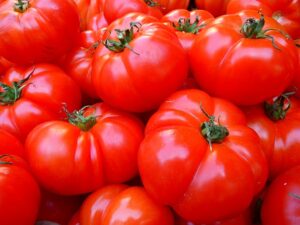Introduction
Carbohydrates are one of the essential macronutrients that provide energy for our bodies. They are composed of carbon, hydrogen, and oxygen atoms, and they play a crucial role in various biological processes. Understanding the structures of carbohydrates is fundamental in comprehending their functions and how they contribute to our overall health. In this article, we will explore the different structures of carbohydrates and their significance.
Monosaccharides
Monosaccharides are the simplest form of carbohydrates and are often referred to as single sugar units. They are the building blocks of more complex carbohydrates. Monosaccharides are classified based on the number of carbon atoms they contain, such as trioses (3 carbon atoms), pentoses (5 carbon atoms), and hexoses (6 carbon atoms). Examples of monosaccharides include glucose, fructose, and galactose.
Disaccharides
Disaccharides are formed by the condensation reaction between two monosaccharides, resulting in the formation of a glycosidic bond. This bond is formed when the hydroxyl group of one monosaccharide reacts with the hydroxyl group of another monosaccharide, releasing a molecule of water. Some common disaccharides include sucrose (glucose + fructose), lactose (glucose + galactose), and maltose (glucose + glucose).
Oligosaccharides
Oligosaccharides are carbohydrates composed of a small number of monosaccharide units, typically 3 to 10. They are formed by the condensation reaction between several monosaccharides, resulting in the formation of glycosidic bonds. Oligosaccharides are found in various foods, such as legumes and certain vegetables. They serve as prebiotics, promoting the growth of beneficial bacteria in the gut.
Polysaccharides
Polysaccharides are complex carbohydrates composed of many monosaccharide units joined together by glycosidic bonds. They can be classified into two main types: structural and storage polysaccharides.
Structural polysaccharides, such as cellulose and chitin, provide support and rigidity to plant cell walls and the exoskeletons of insects and crustaceans, respectively. These polysaccharides are composed of repeating units of glucose.
Storage polysaccharides, such as starch and glycogen, serve as energy reserves in plants and animals, respectively. Starch is found in plants and is composed of two types of glucose polymers: amylose, which is a linear chain, and amylopectin, which is a branched chain. Glycogen, on the other hand, is the primary storage form of glucose in animals and is highly branched, allowing for efficient energy release.
Conclusion
In summary, carbohydrates exist in various structures, ranging from simple monosaccharides to complex polysaccharides. Monosaccharides are the building blocks, while disaccharides, oligosaccharides, and polysaccharides are formed by the condensation of these monosaccharides. Understanding the structures of carbohydrates is essential in comprehending their diverse functions in the body, including energy storage, structural support, and prebiotic effects.
References
1. Nelson, D. L., Cox, M. M. (2008). Lehninger Principles of Biochemistry (5th ed.). W. H. Freeman.
2. Berg, J. M., Tymoczko, J. L., Gatto, G. J. (2015). Stryer’s Biochemistry (8th ed.). W. H. Freeman and Company.













